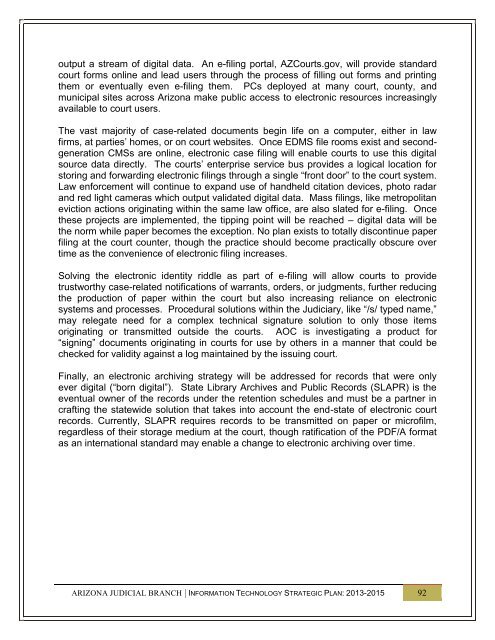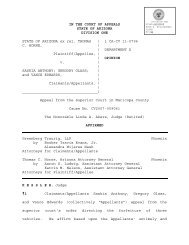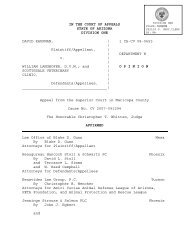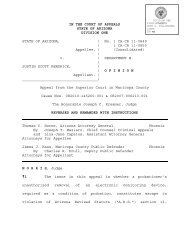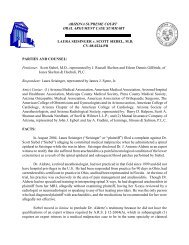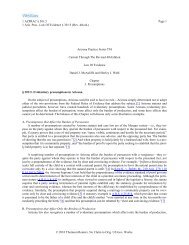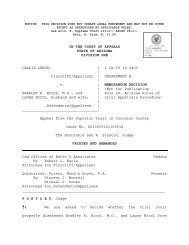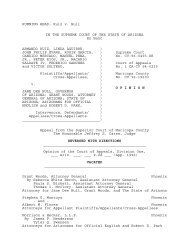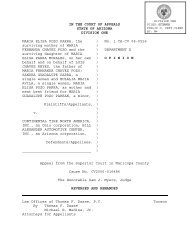Print Version - Arizona Judicial Department
Print Version - Arizona Judicial Department
Print Version - Arizona Judicial Department
Create successful ePaper yourself
Turn your PDF publications into a flip-book with our unique Google optimized e-Paper software.
output a stream of digital data. An e-filing portal, AZCourts.gov, will provide standard<br />
court forms online and lead users through the process of filling out forms and printing<br />
them or eventually even e-filing them. PCs deployed at many court, county, and<br />
municipal sites across <strong>Arizona</strong> make public access to electronic resources increasingly<br />
available to court users.<br />
The vast majority of case-related documents begin life on a computer, either in law<br />
firms, at parties’ homes, or on court websites. Once EDMS file rooms exist and secondgeneration<br />
CMSs are online, electronic case filing will enable courts to use this digital<br />
source data directly. The courts’ enterprise service bus provides a logical location for<br />
storing and forwarding electronic filings through a single “front door” to the court system.<br />
Law enforcement will continue to expand use of handheld citation devices, photo radar<br />
and red light cameras which output validated digital data. Mass filings, like metropolitan<br />
eviction actions originating within the same law office, are also slated for e-filing. Once<br />
these projects are implemented, the tipping point will be reached – digital data will be<br />
the norm while paper becomes the exception. No plan exists to totally discontinue paper<br />
filing at the court counter, though the practice should become practically obscure over<br />
time as the convenience of electronic filing increases.<br />
Solving the electronic identity riddle as part of e-filing will allow courts to provide<br />
trustworthy case-related notifications of warrants, orders, or judgments, further reducing<br />
the production of paper within the court but also increasing reliance on electronic<br />
systems and processes. Procedural solutions within the Judiciary, like “/s/ typed name,”<br />
may relegate need for a complex technical signature solution to only those items<br />
originating or transmitted outside the courts. AOC is investigating a product for<br />
“signing” documents originating in courts for use by others in a manner that could be<br />
checked for validity against a log maintained by the issuing court.<br />
Finally, an electronic archiving strategy will be addressed for records that were only<br />
ever digital (“born digital”). State Library Archives and Public Records (SLAPR) is the<br />
eventual owner of the records under the retention schedules and must be a partner in<br />
crafting the statewide solution that takes into account the end-state of electronic court<br />
records. Currently, SLAPR requires records to be transmitted on paper or microfilm,<br />
regardless of their storage medium at the court, though ratification of the PDF/A format<br />
as an international standard may enable a change to electronic archiving over time.<br />
ARIZONA JUDICIAL BRANCH | INFORMATION TECHNOLOGY STRATEGIC PLAN: 2013-2015 92


